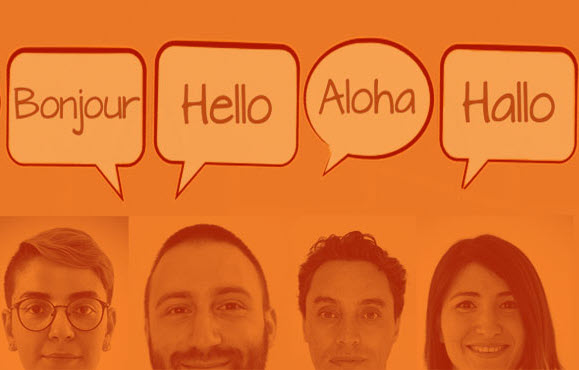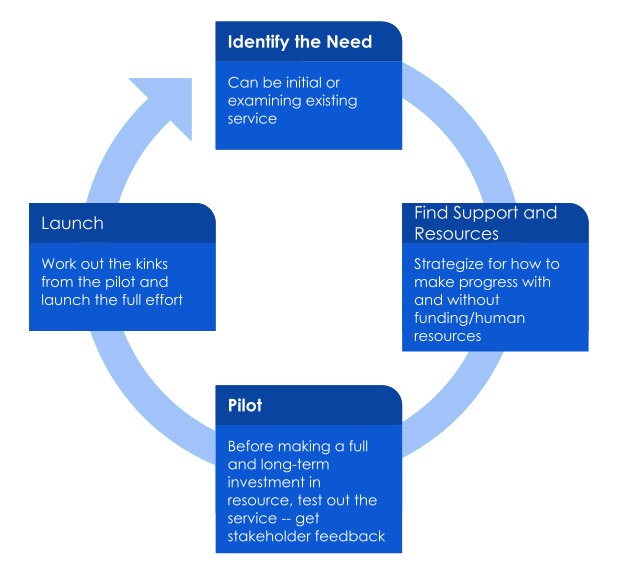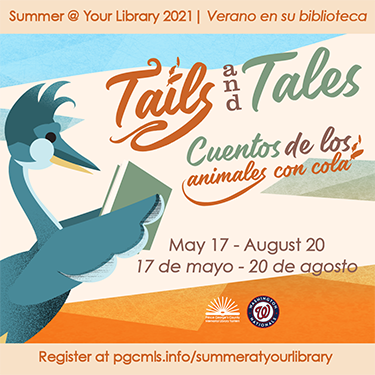Three Lessons for Launching Successful Multilingual Programs at Your Library
Originally written and published on 4 May 2022 to OCLC's Next blog by Nicholas Brown, COO for Communication and Outreach, Prince George’s County Memorial Library System.

The Center for Immigration Studies estimates that 67.3 million Americans speak a language other than English at home, a number that has more than doubled since 1990. That’s a huge number with powerful implications for social institutions, including libraries. For many of us, getting started serving those communities feels like an overwhelming task. I’m here to tell you—you can do it. And you can start today to make a significant difference for your community with multilingual programming.
About ten years ago, my library system focused primarily on English, even as the Spanish-speaking population was rising dramatically. When we started down this path, our team was daunted by the size of the challenge. During that period, our library has made significant progress on expanding multilingual access, starting with hiring bilingual English/Spanish speakers for branches and eventually adding centralized support in the administration. There are a few lessons our library has learned along the way that can help your library advance this important work to promote inclusion and access.
- Welcome incrementalism
- Think creatively across everything you do
- Hire for the future
- And the best news? You don’t need to speak the language to get started.
1. Welcome incrementalism
You won’t go from zero to hero in a day or a week or ever. This isn’t a sprint. It’s not even a marathon, since those have finish lines. It’s a commitment to supporting other languages ongoing—in a formal and consistent way. For that kind of lifelong commitment, you have to be comfortable with incrementalism. Here are some simple ways to get started:
- Add welcoming language to your signage and operations announcements in the languages you plan to support.
- Have staff wear badges indicating which languages they speak.
- Provide welcome and library card sign-up materials (print and digital) in multiple languages.
- Use open access tools, like translation widgets on your website, and eventually expand to custom translation support.
- Promote library resources and offer programming choices in multiple languages.
- That last idea is important for moving forward as it helps evaluate community needs in a more holistic and inclusive way.
2. Think creatively across everything you do

You should look across everything your library does when identifying needs. They could be related to content areas and programs, but also welcome emails, forms, signage, social media, and partnership opportunities. Make staff at every level aware of what you’re doing so they can contribute at any/all stages of that cycle.
Instead of going for big wins, we learned quickly that a clear process supported both better outcomes and our ability to commit to long-term, gradual improvements.
3. Hire for the future
Our initial forays into bilingual programming began with branch staff who already spoke Spanish, ASL, and Mandarin. Those interactions with patrons—while helpful, of course—did not fully take advantage of our team’s potential. Because our early, incremental efforts were successful at helping us identify needs, we realized how extensive those needs were. And that meant prioritizing bilingual skills as part of our hiring process:
- Hire bilingual administrative staff on programming, outreach, and communications teams who have a wider view on everything the system is doing, across all the branches.
- Make bilingual skills part of the job search and requirements.
- Provide a pay incentive for staff who help translate library materials outside of their regular duties.
Many libraries try to make some of those small, incremental changes I recommended by using outside translation services for one-off projects. Generally, those are very expensive compared to what you’d pay a staff person while getting limited support. As such, I recommend working with library leadership to include translation duties in new staff descriptions, so translation support is prioritized in hiring and to maximize the impact of the funding.
Small wins, big gains

One big “a-ha” moment for us was when we started thinking about multilingual support in the same way we do about other content or program plans. Nobody ever started a library by saying, “These are all the books we’ll need to have in order to be successful forever.” It’s a journey. And so now, we have processes and programs to help us move specific solutions forward over time.
Rather than thinking of “being bilingual” as a destination, it’s part of who we are. Toward that end, our brand and usage guidelines now include rules about Spanish. This helps us define who we are in relation to our communities and institutionalize the multilingual access effort. How we talk about issues, what terms we use, and how we present ourselves to customers can either open the door to lifelong engagement from customers or cause them to hesitate and turn away from the library. This is what multilingual support is all about—reflecting the people who need our content, programs, spaces, and resources.
I’ll repeat. You can do this. You can start today. You can adopt an incremental mindset, have a blueprint for moving ideas into production, and work multilingual skills into your future hiring goals. All it takes is a decision about who you want to be.
Photos provided courtesy Prince George’s County Memorial Library System, used with permission.
See also Nicholas Brown's presentation on this topic at the OCLC booth at PLA 2022 in Portland, Oregon.
For more community engagement inspiration, please visit our hub at oc.lc/community-engagement.
Community engagement
Where do you go for inspiration? Invigorate your community engagement efforts with advice from library leaders.
